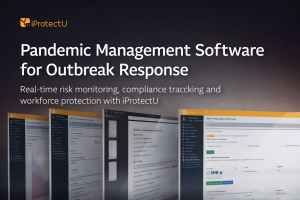What is ISO 45001?
ISO 45001 is an international standard which outlines requirements for an organisation’s occupational health and safety (OH&S) management system. It provides a framework to manage risks and improve OH&S performance. The standard specifies criteria for the OH&S policy, objectives, planning, implementation, operation, auditing and review.
The Importance of Leadership Commitment
A key element in the achievement of ISO 45001 certification is leadership commitment.
Leaders should establish a unity of direction and purpose. Ideally, top tier management would be engaged and actively participating in the OH&S Management System.
A skilled leader sets an example for staff, creating a culture where everyone feels empowered to contribute to the organisation’s OH&S goals.

Key Actions and Responsibilities that Leaders must undertake to demonstrate Commitment
Setting clear objectives: Leaders should establish clear and measurable OH&S objectives, which are aligned with the organisation’s goals.
Role Model Behaviour: Leaders who participate in safety activities (e.g., inspections, training) inspire others. ‘Visible leadership’ is important, for example completion of regular safety walks, participation in safety committee meetings, and involvement in incident investigations.
Employee Participation: Committed leaders create opportunities for employee engagement and assign responsibilities for OH&S functions. They communicate key information and the importance of effective, encourage employee participation in safety discussions and reward safe work practices.
Resource Allocation: Successful implementation of OH&S requires resources. Leaders should ensure adequate funding, time and personnel. This may involve budgeting for safety equipment, investing in training programmes and organising staff DSE assessments.
OH&S Policy: Leaders should develop, document, and communicate an OH&S policy which is relevant to the organisation’s context and purpose. The OH&S policy provides a framework for setting OH&S objectives and demonstrates management commitment to continuous improvement.
Integrate OH&S into business processes: Good leaders ensure the OH&S management system is integrated into the overall business processes. This involves considering OH&S risks and opportunities during decision-making stages and integrating OH&S into planning and operational activities.
Prevention Culture: Leaders should drive a proactive approach to safety, with the goal of preventing incidents before they occur. Safety metrics should be monitored, trends analysed i.e. workplace incidents, and clear goals set.
Continuous Improvement: Committed leaders champion ongoing evaluation and refinement of the OH&S management system. Management should monitor performance, conduct regular audits, and take corrective actions to address any non-conformities upon discovery.
Case Study – Company XYZ
Company XYZ had a safety programme in place; however, it was stagnant and there had been a mostly reactive attitude among management when it came to safety, placing a burden on frontline staff. A new manager came on board and with a reduction in incidents and employee safety in mind, introduced the following:
- Funding: The manager allocated a dedicated budget for safety training, hazard identification, and infrastructure improvements. This demonstrated her commitment to employee well-being and risk reduction.
- Integrating Safety into Strategy: The manager ensured safety became a core value, embedding it into company policies, performance reviews, and communication channels.
- Leading by Example: The manager participated in weekly safety walks, chaired the safety committee meetings, and actively sought feedback from employees across the different departments. This visible leadership fostered trust and encouraged open communication among staff.
Company XYZ achieved ISO 45001 certification within a year. The proactive approach led to a significant decrease in accidents and a more engaged workforce. There are numerous case studies like this, which reflect how executive buy-in can help secure ISO 45001.

Leaders undoubtedly set the tone for an organisation
A visible dedication to safety protocols, adequate resource allocation for OH&S, and active participation in risk assessment demonstrates the importance of a safe work environment. This commitment empowers employees and fuels the ongoing improvement necessary to meet ISO 45001’s requirements.
Achieve ISO 45001 with iProtectU ISO Auditing Software
iProtectU EHS Software is a fully integrated modular software with mobile app functionality that can help organisations achieve ISO 45001 certification. iProtectU EHS Software includes a comprehensive set of features, including risk assessment, policies, safe systems of work, operational controls, training and auditing. Our quality management software is trusted by quality professionals, auditors and our clients.
Get in touch today to discuss how we can help your organisation to achieve and maintain ISO 45001 certification.








